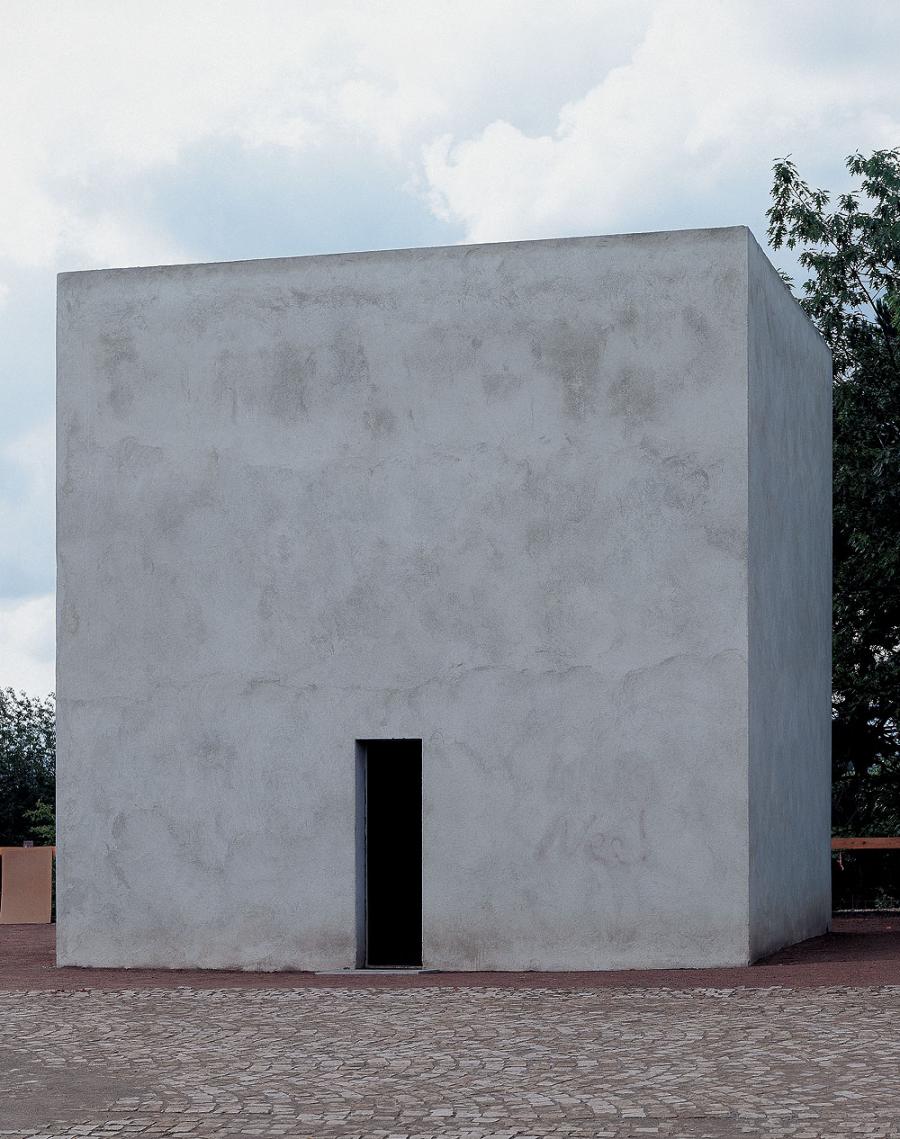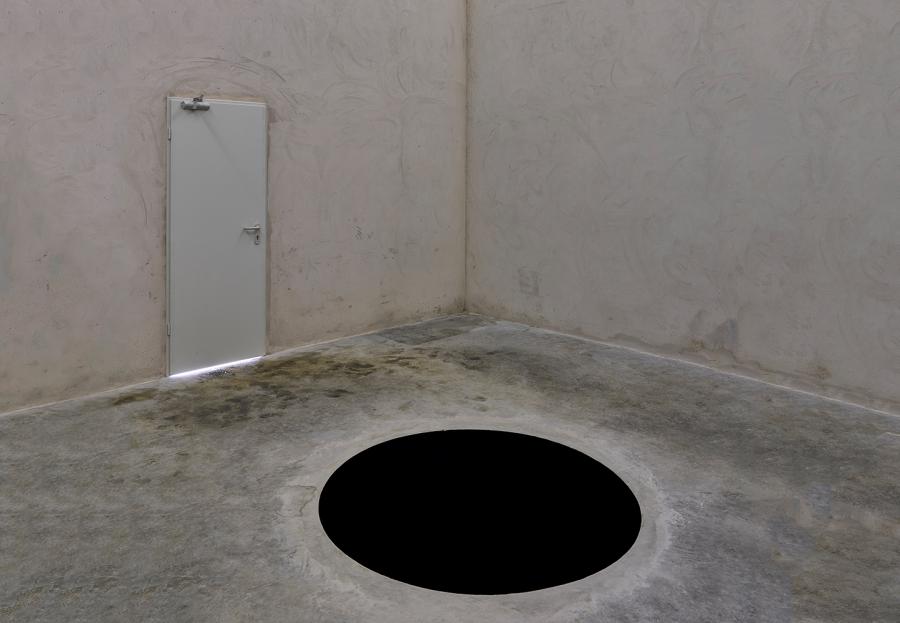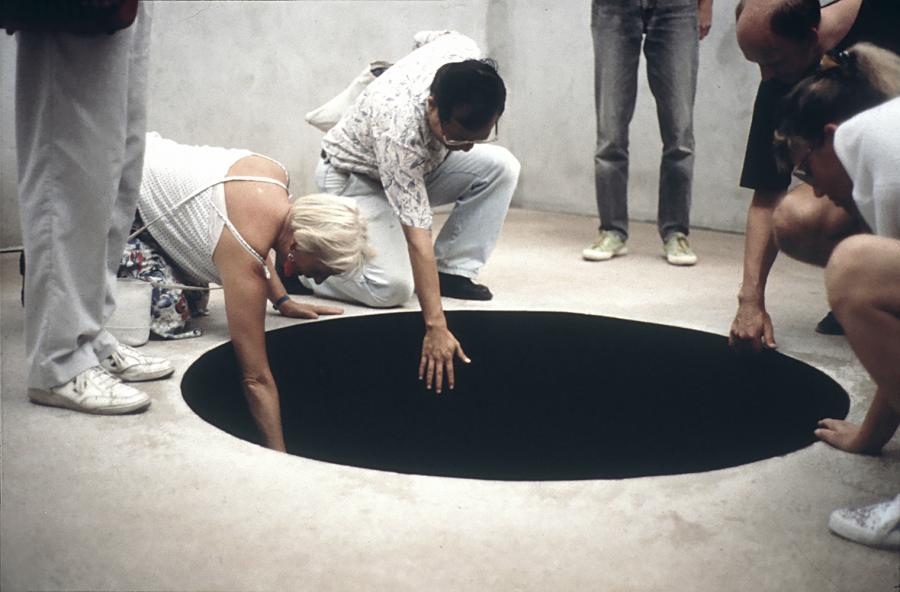
Sublime of the Void in Anish Kapoor’s “Descent into Limbo”
What is sublime? Why are people so fascinated with everything dangerous and terrifying as long as their own safety is ensured? In this paper, I am looking for answers to these questions by analyzing the concept of sublime and its representation in the works by the contemporary artist Anish Kapoor.
The Romantic sublime of the Void
The term sublime is widely employed in philosophy, literary studies, and the art world, yet it is a challenge to give a definition of what sublime is. The concept of sublime is particularly elusive for words because the feeling of sublime is born “whenever experience slips out of conventional understanding, whenever the power of an object or event is such that words fail and points of comparison disappear” (Shaw, 2017, p.2). The experience of sublime is thus created on the limits of “reason and expression with a sense of what might lie beyond these limits” (Shaw, 2017, p.2). In my attempt to address the topic of sublime I am focusing on the artwork Descend into Limbo (1992) by contemporary sculptor Anish Kapoor.
Burke traced the source of the sublime to “whatever in any sort terrible, or is conversant about terrible objects, or operates in a manner analogous to terror.”
Anish Kapoor (1954) is an Indian-born British sculptor specializing in installation art and conceptual art. In 1990, Kapoor represented Great Britain at the Venice Biennale with his installation Void Field. Void Field was the first artwork that brought Kapoor international recognition. Anish Kapoor has been exploring and developing the topic of the Void almost throughout his entire career. Kapoor’s seminal void-themed installation from 1992 is called Descend into Limbo. This is how Kapoor described Descend into Limbo in one of his early technical drawings: “Cubed building with a dark hole in the floor. This is a space full of darkness, not a hole in the ground” (Kapoor, 1992). The darkness that Kapoor mentioned there is an important attribute of sublime according to the 18th-century political philosopher and pamphletist Edmund Burke – the author of the influential aesthetic treatise on the beautiful and the sublime (Burke, 1757). Burke’s sublime is sometimes called “the romantic sublime” (Tate Research Publication, 2013) and is associated with “experiences of awe, terror and danger”. According to Philip Shaw (2017, p. 73), Burke traced the source of the sublime to “whatever in any sort terrible, or is conversant about terrible objects, or operates in a manner analogous to terror.”
In my opinion, Burke’s aesthetic theory has not lost its relevancy and can be applied as a kind of theoretical lens to view Anish Kapoor’s artworks.

Descent into Limbo 1992 (outside)
Kapoor’s Descent into Limbo is built upon darkness
Burke associated darkness 1) with obscurity (Burke, 1757, {132}) – the unclear, the unknown, and hence terrifying 2) with a privation - the privation of light in this case (Burke, 1757, {146}) 2) with pain – in his writing Burke provided a physiological explanation why darkness is related to pain based on his knowledge of the human eye work (Burke, 1757, {227}). The general idea that Burke expressed about darkness in his treatise is that darkness, with all its disagreeable characteristics, is terrible.

Descent into Limbo (Inside)
Burke’s understanding of darkness as terror resonates with Kapoor’s commentary on his Voids. In the conversation (Kapoor, n.d.-b) with critical theorist Homi Bhabha about the Voids Kapoor states:
“I have always been drawn to a notion of fear, towards a sensation of vertigo, of falling, of being pulled inwards. This is a notion of the sublime which reverses the picture of union with light. This is an inversion, a sort of turning inside-out. This is a vision of darkness. Fear is a darkness of which the eye is uncertain, towards which the hand turns in hope of contact, and in which only the imagination has the possibility of escape.”
This passage is the only time in the conversation with Bhabha when Kapoor mentions the sublime – the feeling that we resort to experiencing the pulling darkness of the void and the terror that it induces.
The obscurity (“Fear is a darkness of which the eye is uncertain”) of the void in Descend to Limbo has a material representation – the hole in the ground that spectators see as they enter the artwork’s building. The hole looks like a 2-dimensional pigment painting and a 3-dimensional black pit at the same time. In 1992 the viewers of Descend to Limbo were confronted with the ambiguity and unsettling obscurity of this art object. As documentary photography shows, people were even reaching out into the void in order to clarify for themselves what exactly they see.

Viewers of Descent into Limbo 1992
As the documents indicate, in 1992 there was no barrier between the black pit of Descent into Limbo and the audience - the viewers could come up to the void as close as they wanted to and look straight into its dizzying darkness.
This arrangement made it possible for the visitors to have an “encounter with the limit” (Shaw, 2017, p. 2) of terror and to look beyond this limit – both physically and metaphorically. This is what Anish Kapoor said about Descent into Limbo:
“The reality there is one of fear. Standing on the edge, somewhere between a hole and a plane, with a diameter and a depth that is more than big enough to completely lose oneself both physically and psychologically. In limbo, in-between. This is not an experience of voiding one’s fear into emptiness – it is a conditioned experience of fear.”
According to Burke, being in close but still safe proximity to danger, pain or terror gives one a feeling of the delight of subliminal experience:
“When danger or pain press too nearly, they are incapable of giving any delight and are simply terrible; but at certain distances, and with certain modifications, they may be, and they are, delightful, as we every day experience” (Burke, 1757, p. 111). Distance from pain is an act of self-preservation, “the ability to ‘labour’ against destruction” (Shaw, 2017, p. 74) of the ‘I’ in the encounter with the sublime or “a conditioned experience of fear” in terms of Kapoor.
On the one hand, Descent into Limbo makes viewers feel small, vulnerable, and overpowered but on the other hand, “it is precisely by being overpowered that a high-minded feeling of superiority or nobility of soul is attained” (Doran, 2015, p. 11; cited in Shaw, 2017, p. 2) – in other words, one experiences the “paradoxical nature” of the sublime (Shaw, 2017, p. 2). This is how the ambiguous subliminal experience is described by Terry Eagleton: “A vulnerable object becomes an infinite object. By identifying ourselves with the boundlessness of the sublime, we cease to be anything in particular but thereby become potentially everything. In this dazzling emptiness, all and nothing are closely allied, since both are absolved from limits” (Eagleton, 2005, p. 2). The feeling of superiority, infinity, or delight that comes from an encounter with the sublime vanishes as the distance between us and terror disappears.
According to Burke, being in close but still safe proximity to danger, pain or terror gives one a feeling of the delight of subliminal experience
Terry Eagleton pointed out that we need the aestheticizing contemplating distance between us and the terrifying: “Antigone is sublime, but a bomb in a crowded bus station is not” (Eagleton, 2005, p. 3). By a strange coincidence, a desublimating incident happened to Descent into Limbo in 2018 - when it was exhibited in Portugal, a man fell into the black hole of the installation (Cascone, 2018). The visitor got injured and had to be taken to the hospital. It is hard to prove now if this incident really took place or if it is just an art world myth – in either case, the story about the fall into Descent into Limbo tells us about what happens when there is no “aestheticizing distance” between the source of sublime and us.
The Postmodern Sublime of the Void
According to Anish Kapoor, the void in Descent to Limbo is a “non-object” (Jaipur Literature Festival, 2021). A critic of Kapoor’s art, Homi Bhabha, states that “the void mirrors nothing”, therefore “the challenge of the work is more fundamental than interpretation or identification” (Jaipur Literature Festival, 2021). These characteristics of the Void make it comparable to the prominent artwork by Barnett Newman Vir Heroicus Sublimis (1951). Philip Shaw argues that in this painting Newman “does not gesture towards anything beyond the work; there is no hidden depth, and on complex meaning to be deciphered; its subject matter is itself” (Shaw, 2017, p. 180). According to a French philosopher and a critic of Newman’s art Jean-François Lyotard, alluding to something that can’t be shown or presented is essential to the sublime (Lyotard, 1984). In other words, there is sublimity in the experience that the Void being a “non-object” provides to someone who faces it. In Lyotard’s view, the sublimity of an artwork lies in its radical indeterminacy, which can be described with the phrase “something happens’’ as opposed to “what happens”:
“Now, and here, there is this painting where there might have been nothing at all, and that’s what is sublime” (Lyotard, 1984, as cited in Shaw, 2017, p. 181-182).
The indeterminacy of artwork also means that “the art object would no longer bend itself to models, but would try to present the unpresentable; it would no longer imitate nature but would be an artifact, a simulacrum” (Lyotard, 1984).
The Void is an attempt to present the unpresentable. In order to present the unpresentable, Anish Kapoor has been striving to “deny the hand” and “get beyond gesture” because “the traces of manufacture actually get in the way of looking” (Kapoor, n.d.-b). Creating the Void with black pigment and a concrete edifice, Kapoor has reached the subliminal sensation - as documented by Homi Bhabha:
“When I stand before the work”, says Bhabha, “the place where I would in some way want to see some affirmation of my viewing, my gaze returned, I am taken into the very innards of the void. The soft pigments will not allow me to settle on the hard lines of the object. My eye will be led into the very extreme pinnacles of the piece, and then my gaze is scattered onto the pigment on the floor around the piece” (Kapoor, n.d.-b).
In the Void the “unpresentable” as it is understood by Lyotard borders on the concept of Burkean subliminal “obscurity” discussed in the previous section of this paper.
As it was mentioned above, the subliminal experience provided by Descent into Limbo is characterized by indeterminacy and “nowness”. Paradoxically, the artwork has a temporal aspect: originally visitors had to walk for some time to the remote concrete edifice that contained the void, enter the building and spend some time looking at the void and trying to understand what is in front of them. Anish Kapoor employs time as the “fourth dimension”, “sculpting the time” like it was done in Tarkovsky’s films (Skakov, 2012, p. 2).
The Void is made of concrete, black pigment, and time. The Void thus produces a spiritual effect of “warping time and space”, similar to the one that Newman described in his essay “The Sublime is Now” (Shaw, 2017, p. 180).
“Waiting in now part of the special dimension of sculpture itself,” says art critic Homi Bhabha about Descent into Limbo. “The limits of time are explored in the volume of form and material. In order to experience it, the work asks you to wait, to confront your vulnerability within the presence of the void” (Jaipur Literature Festival, 2021).
The Void challenges the viewers: how long can you survive the encounter with the “nowness” of a non-object? In Lyotard’s view, the sublime is an “indeterminate event” (Shaw, 2017, p. 182). Homi Bhabha expresses a similar idea when commenting on Descent into Limbo: “There is no end and no beginning but an infinite moment of being transformed by the process of waiting” Jaipur Literature Festival, 2021). But in order to experience Burkean ‘delight’ and not to be consumed by the ‘terror’, “keep your balance - you are waiting for yourself to return from the void” (Jaipur Literature Festival, 2021).
Concluding remarks
The feeling of sublime is born out of proximity to danger, pain or terror – in other words, of everything that we, human beings, avoid. Then why do people value and even seek the subliminal experience? Why are art lovers fascinated with Anish Kapoor’s Voids?
I think the reason for this fascination is the tingling, dizzying mix of terror and delight that you experience when you encounter the Void. As you approach the Void, you feel how its velvety darkness is pulling you inwards, you imagine yourself falling into the pit and you wonder what terrifying things might be waiting for you there. For a while, the Void fully absorbs you, even if your physical body is safely positioned on its side. But suddenly you realize that you are not falling in the darkness anymore. You feel the hard floor under your feet, and you see the well-lit gallery’s space around you - you are back from the Void, and that feels delightful. The terror is gone, but something inside of you has been transformed after this encounter with the limit. In my opinion, this refreshing “reboot” of reality perception, set off by a conditioned experience of fear is what people (sometimes unconsciously) crave, and that is what makes the subliminal experience of the Void that significant.
References
Burke, E. (1757) The Works of the Right Honourable Edmund Burke, Vol. I. (of 12). The Project Gutenberg EBook
Eagleton, T. (2005). Holy terror. States of Sublimity. Oxford: Oxford University Press.
Kapoor, A. (n.d.). Anish Kapoor: Descent into Limbo.
Kapoor, A. (n.d.-b). Anish Kapoor: Homi Bhabha and Anish Kapoor: A conversation.
Lyotard, J. (1984). The Sublime and the Avant-Garde. ArtForum.
1990 Anish Kapoor | British Council. (n.d.).
Shaw, P. (2017). The sublime. London: Routledge.
Skakov, N. (2012) The Cinema of Tarkovsky: Labyrinths of Space and Time, I. B. Tauris & Company, Limited, 2012. ProQuest Ebook Central